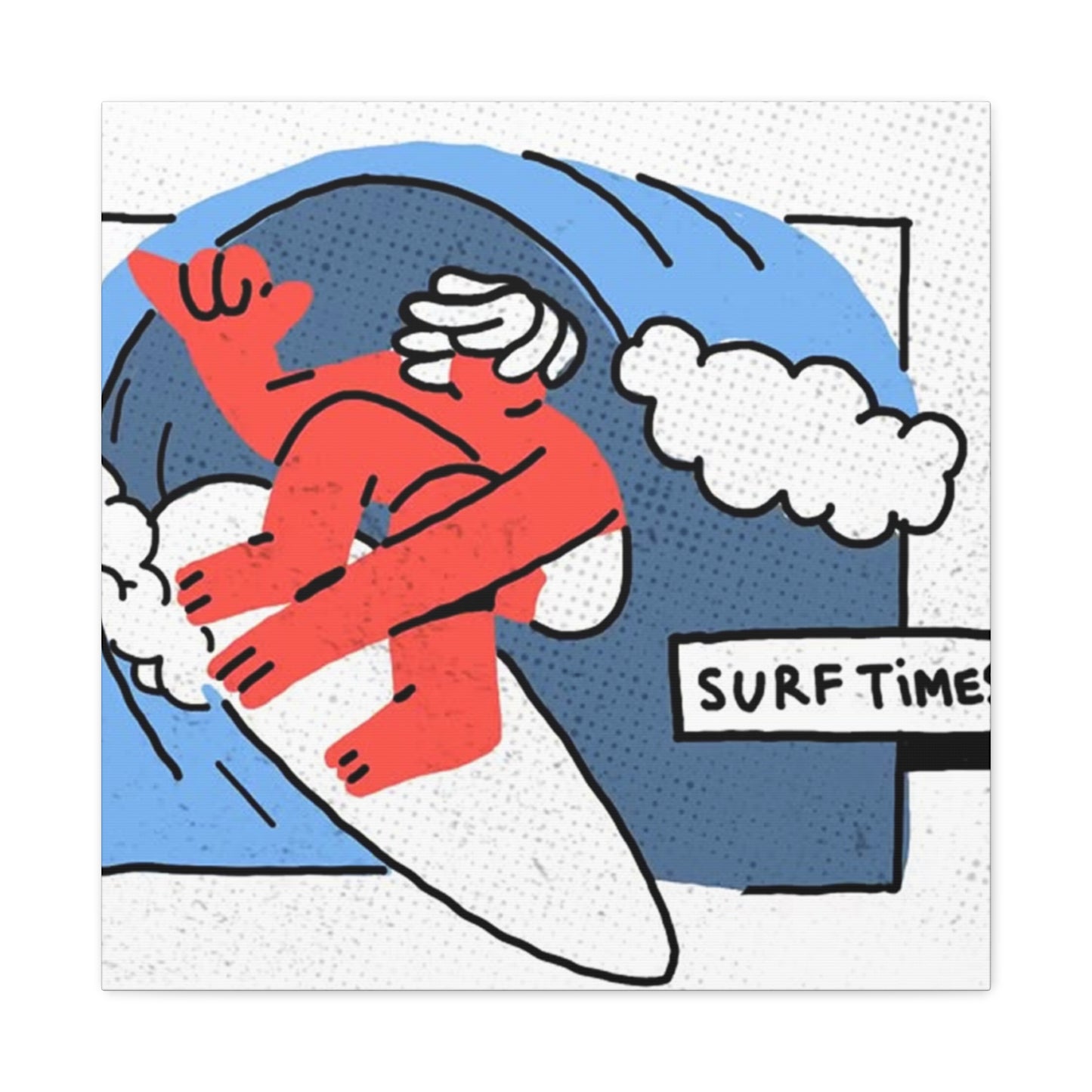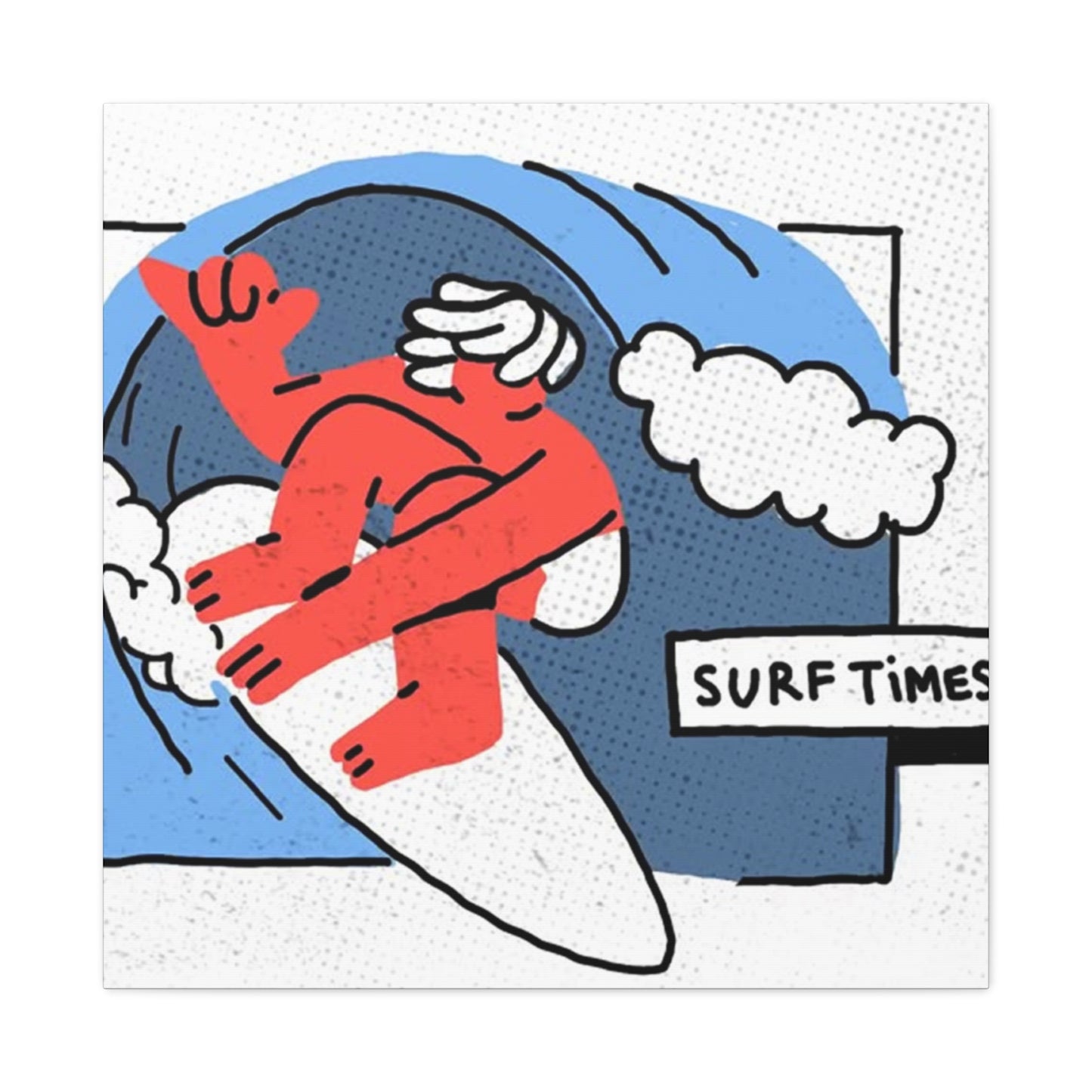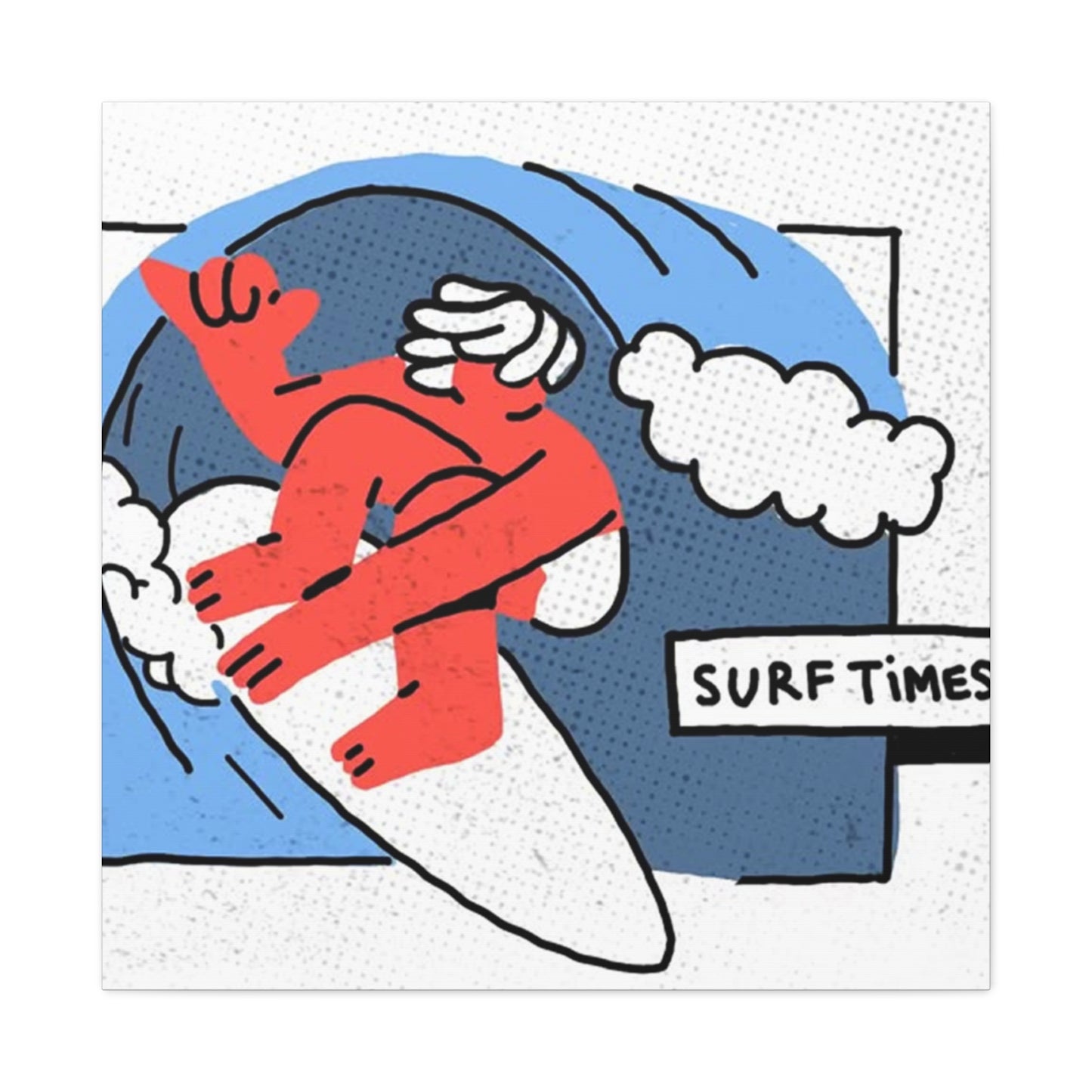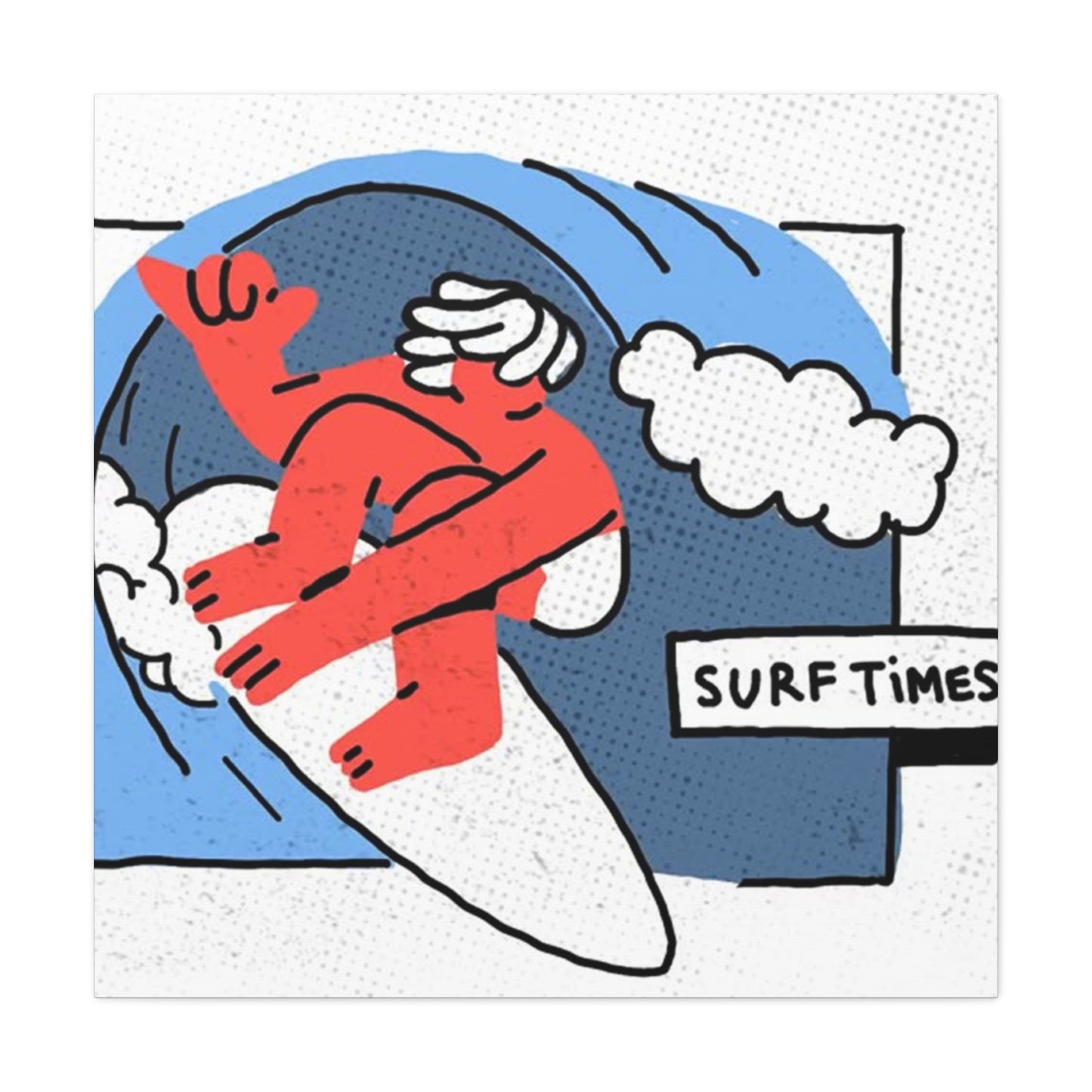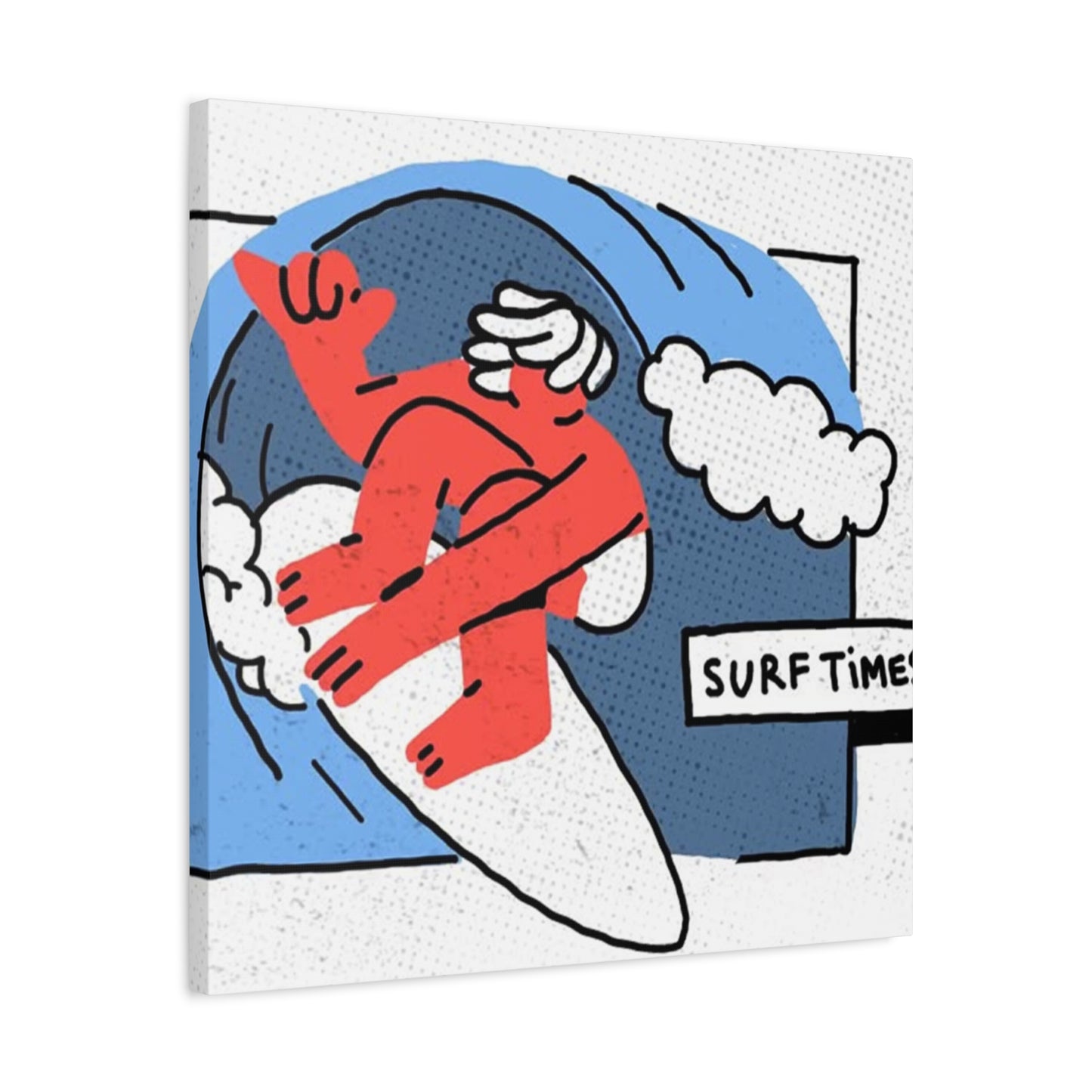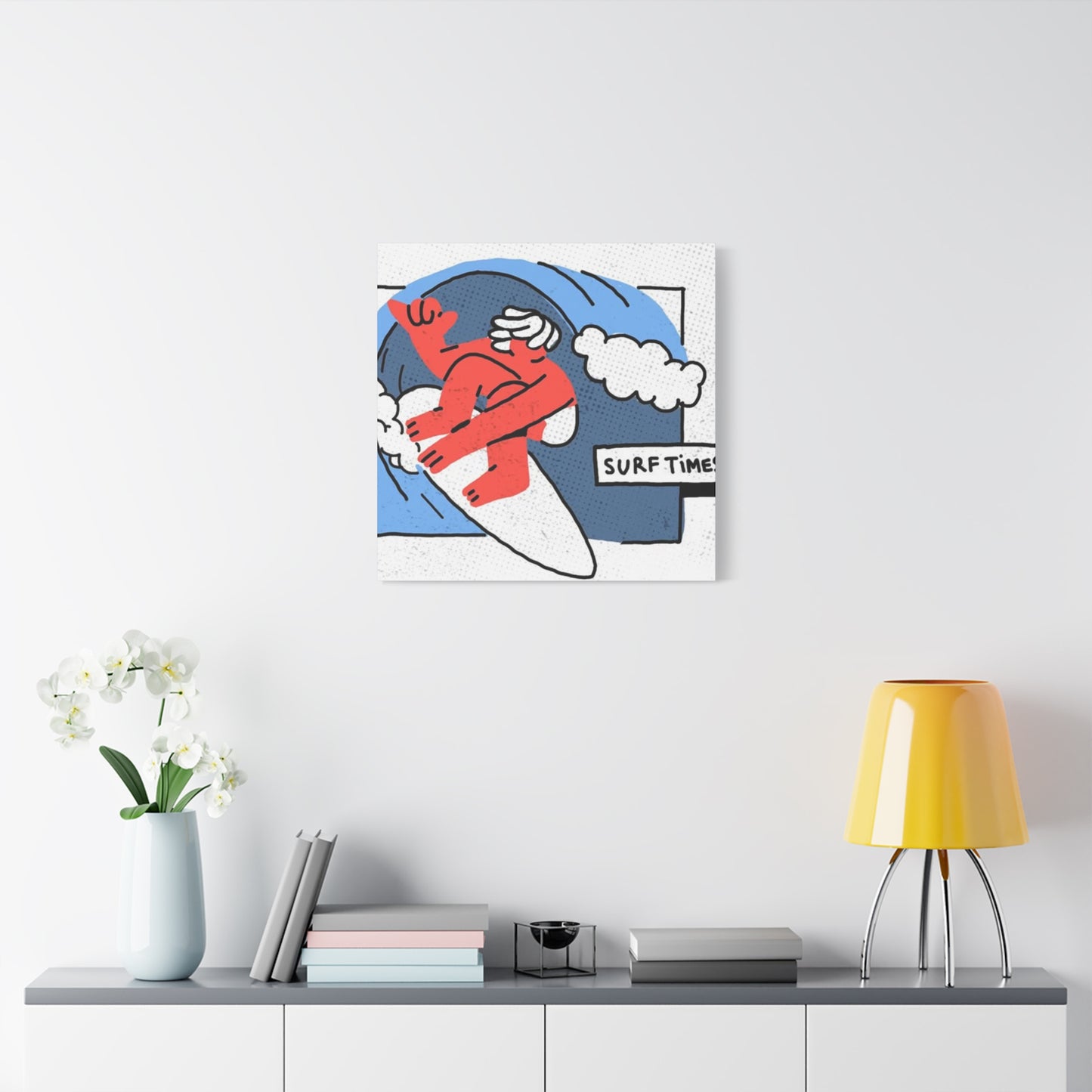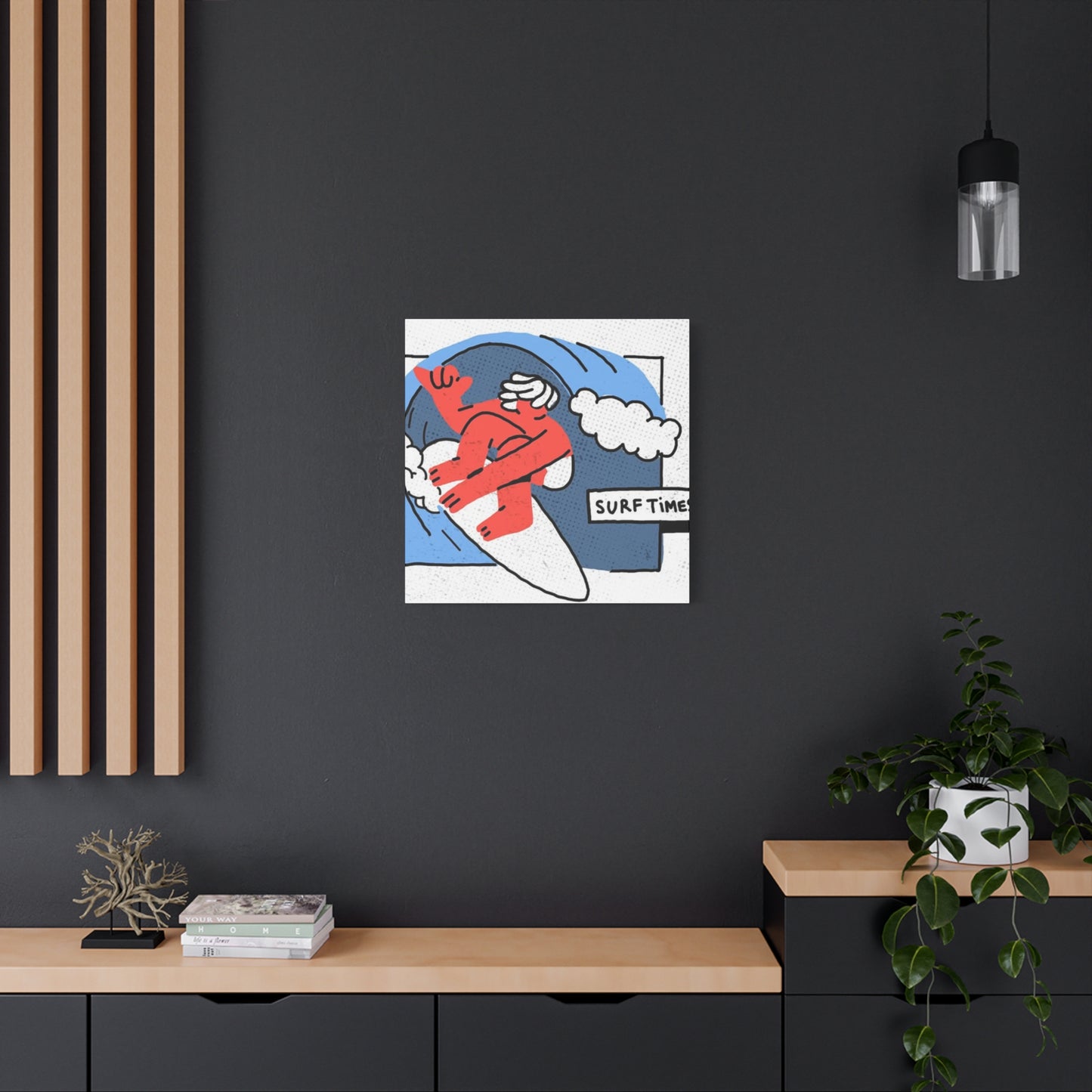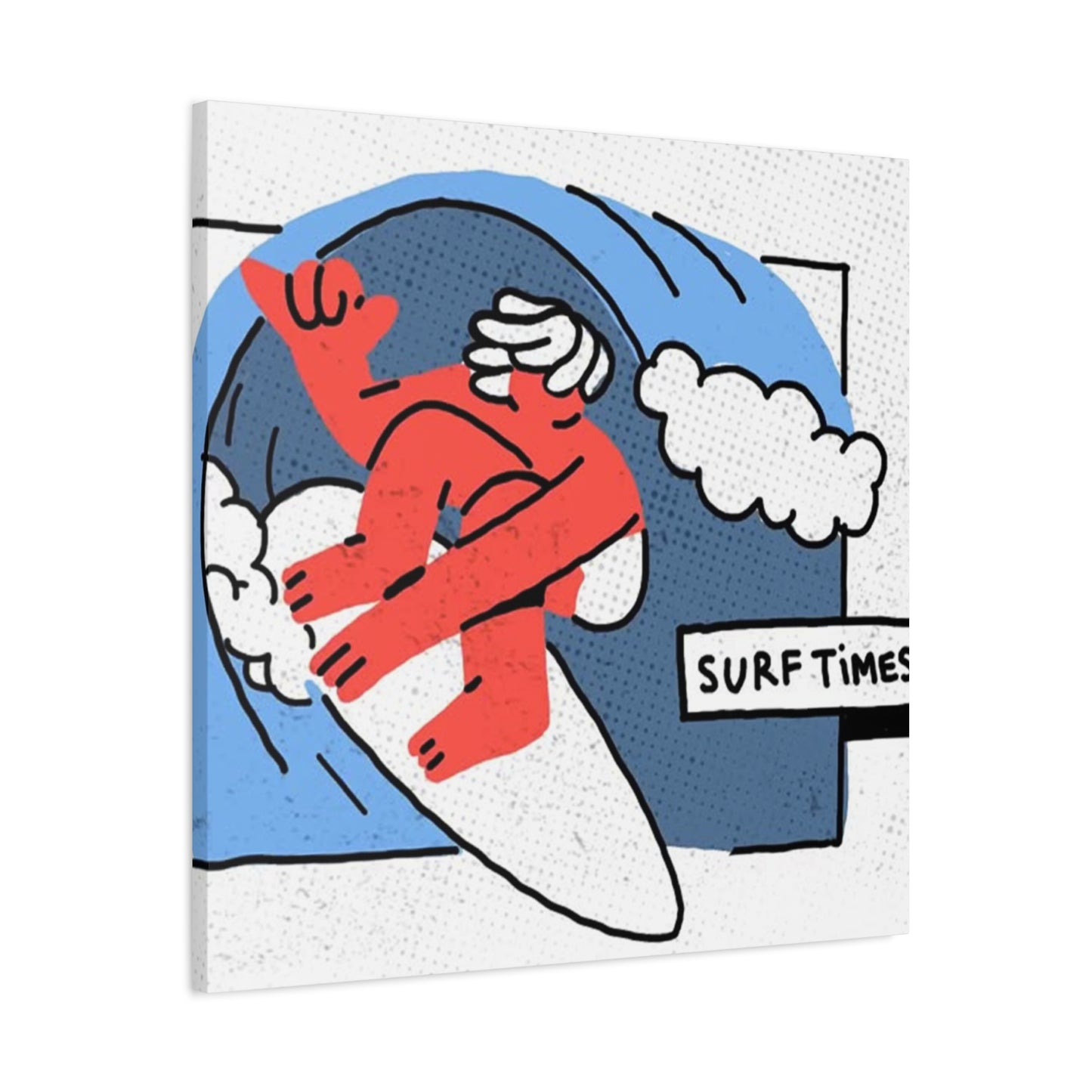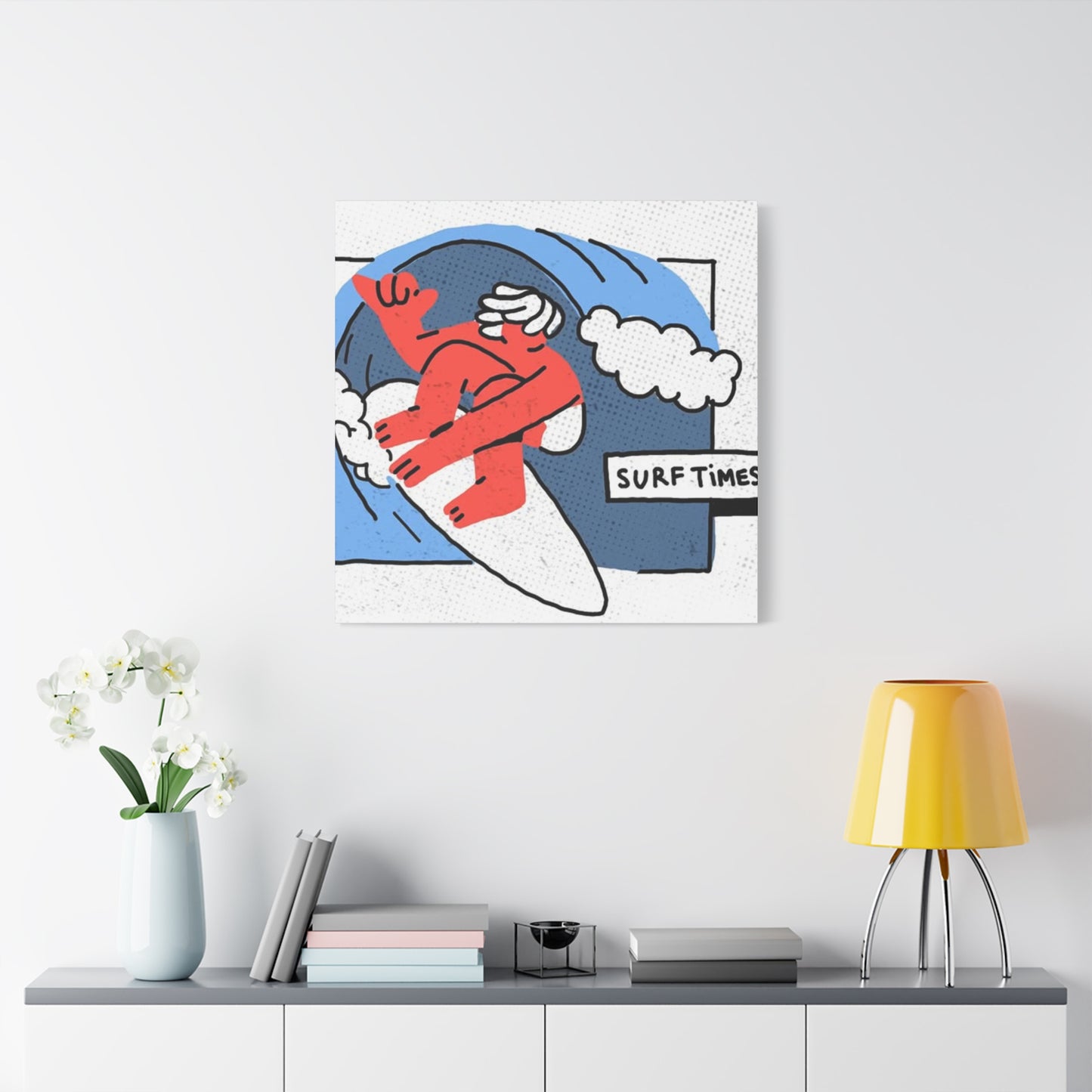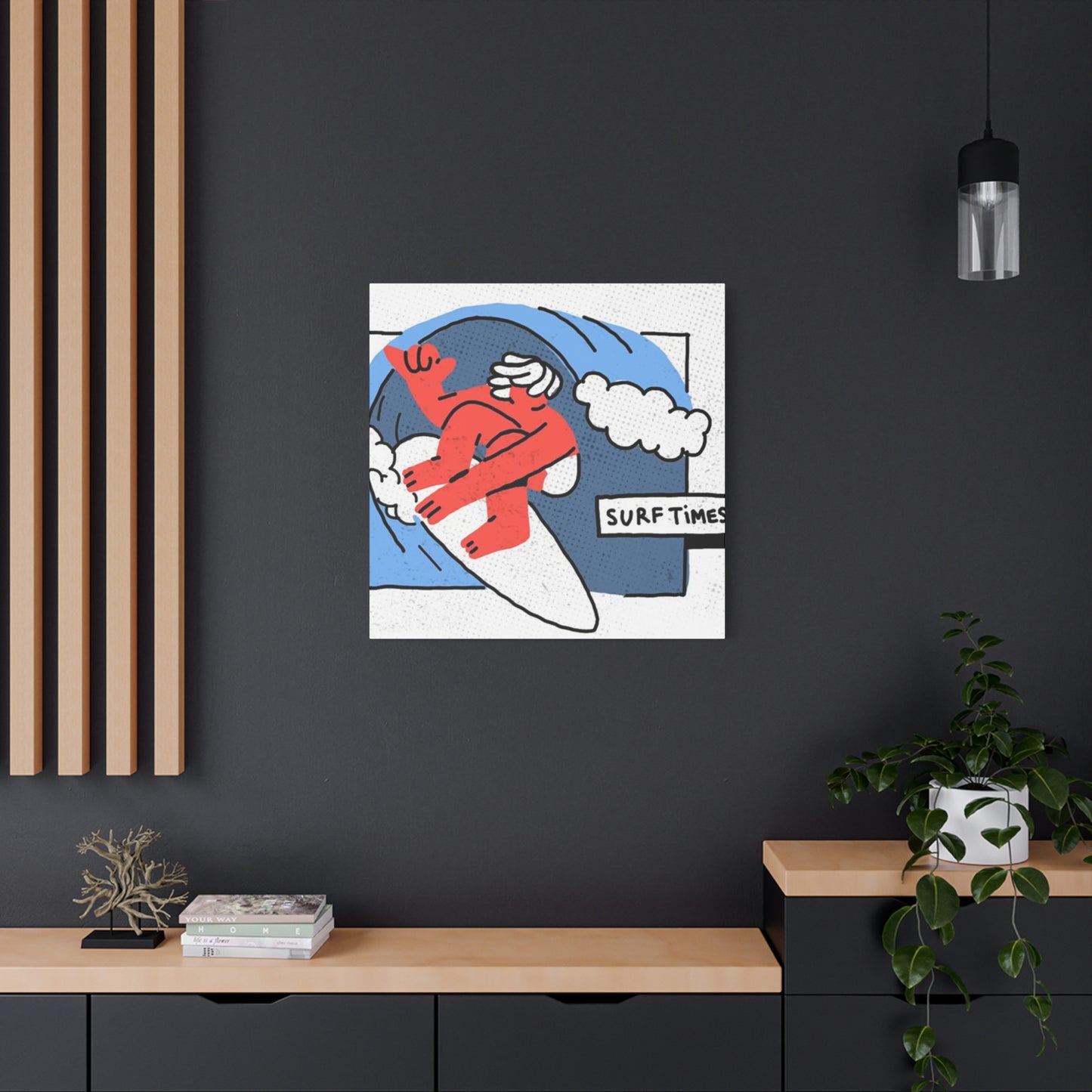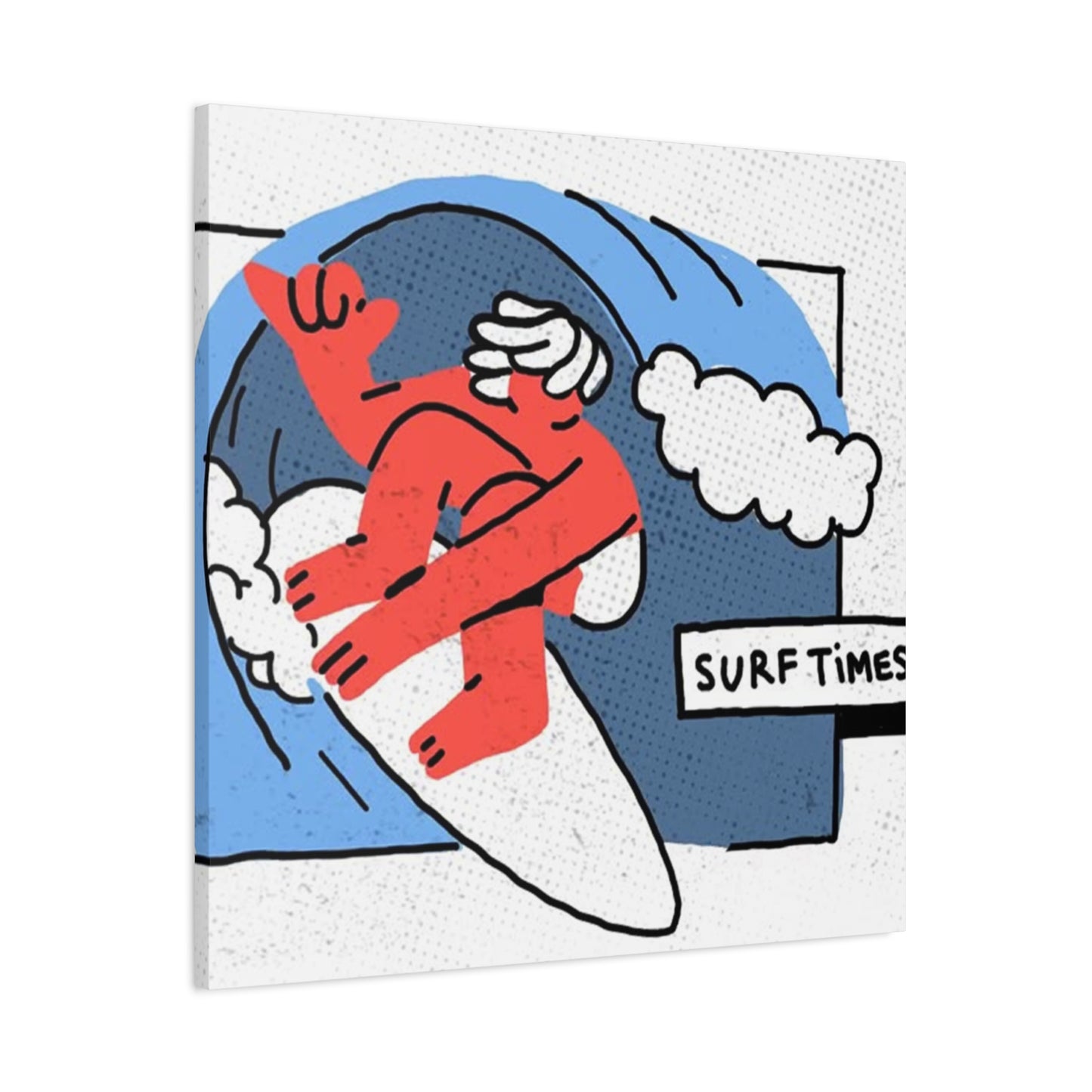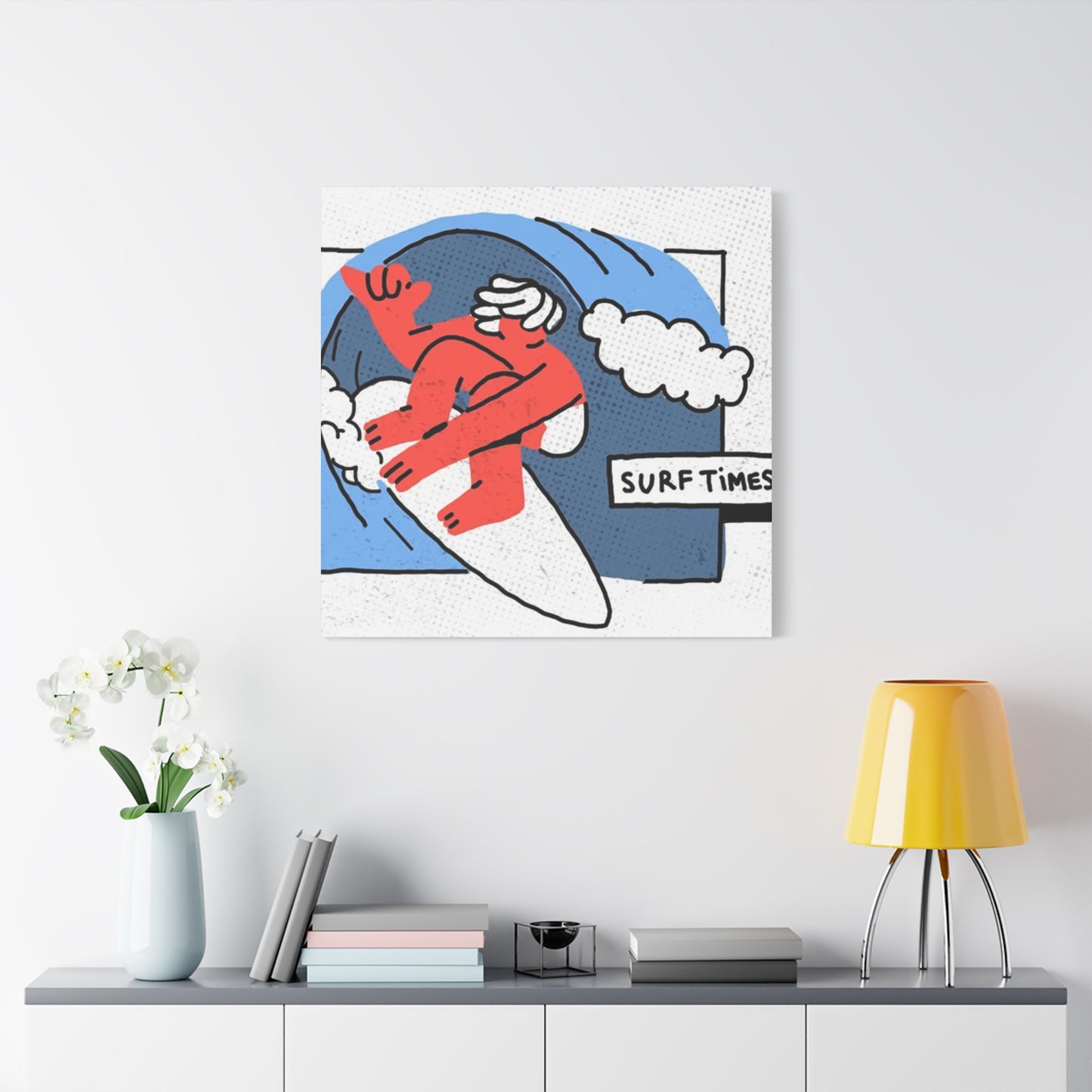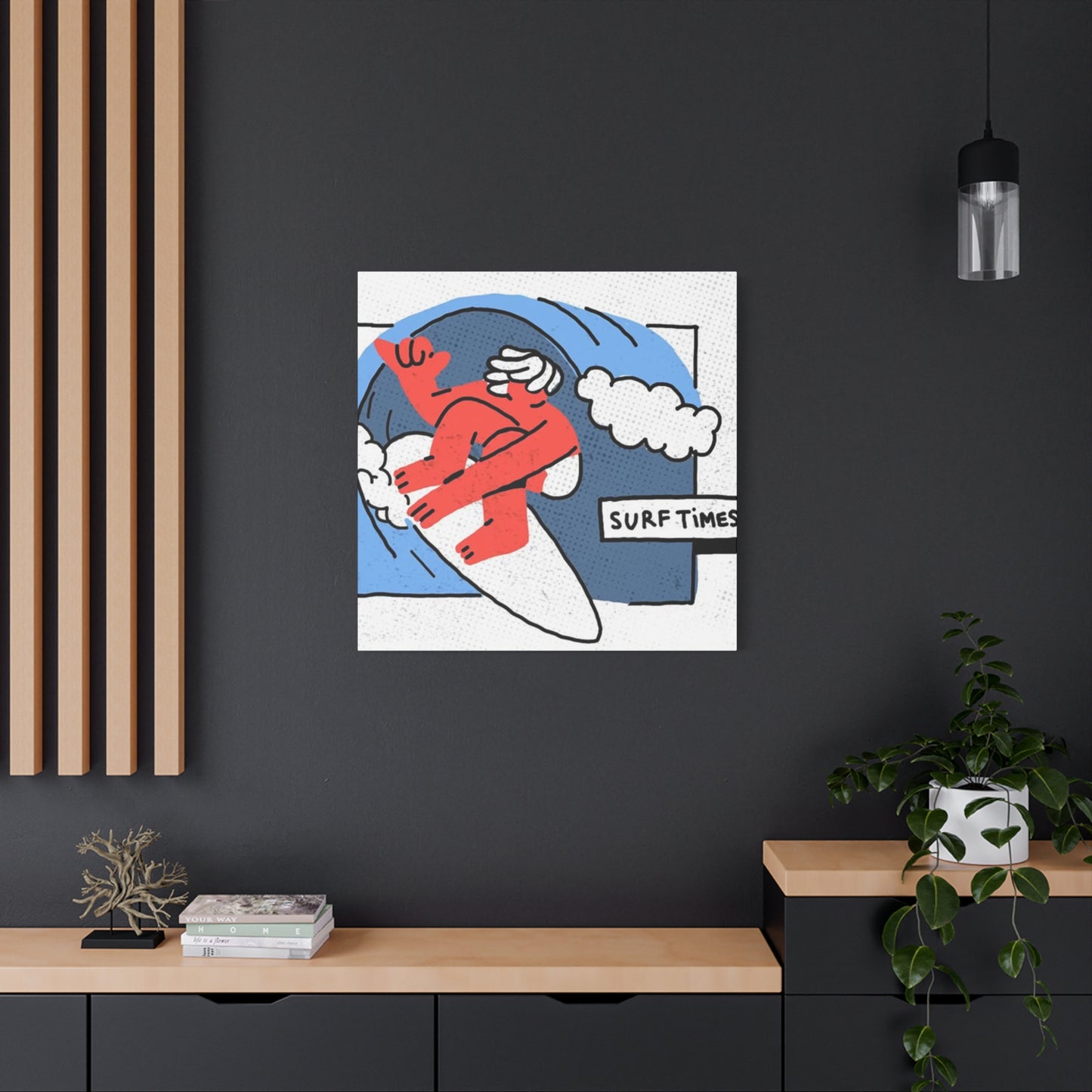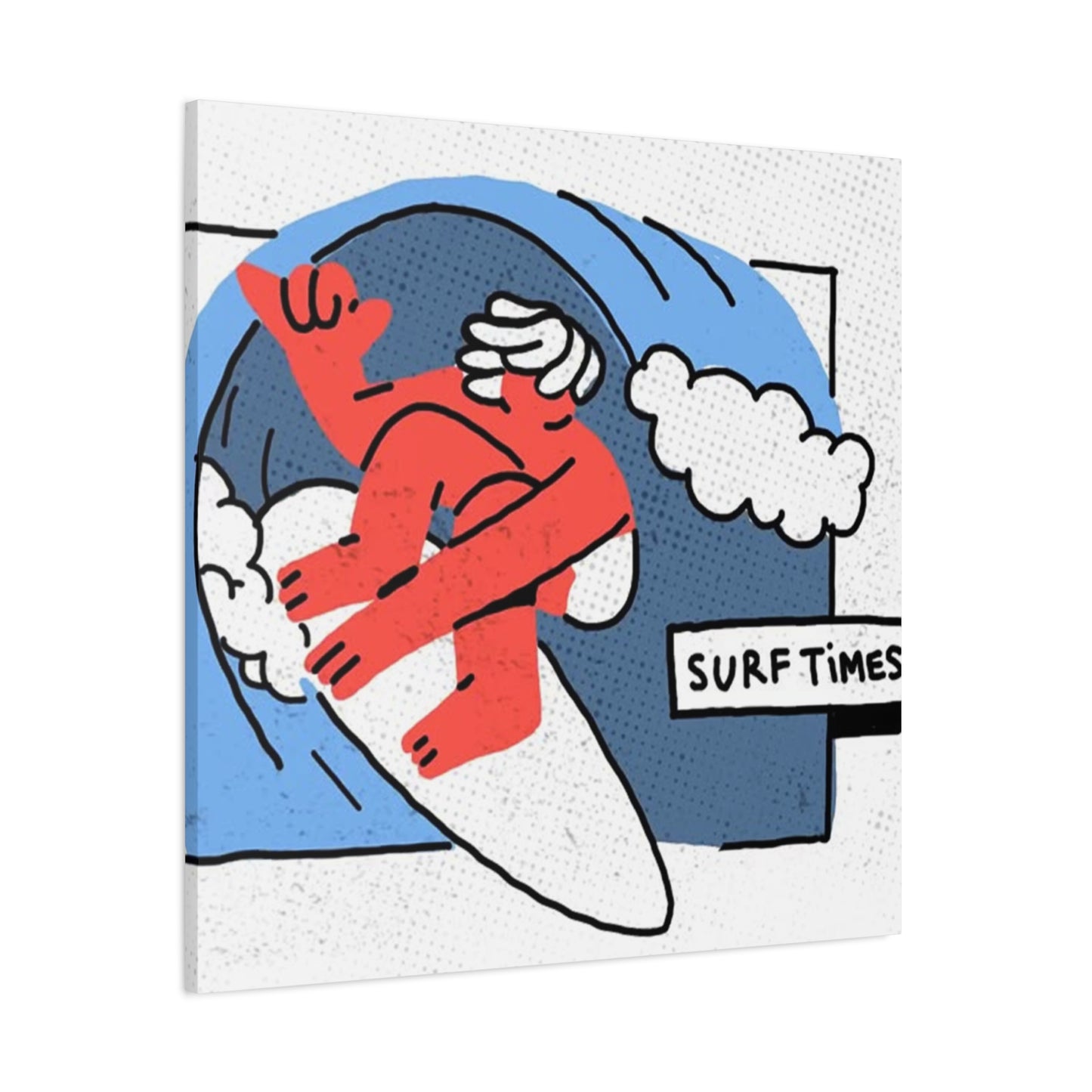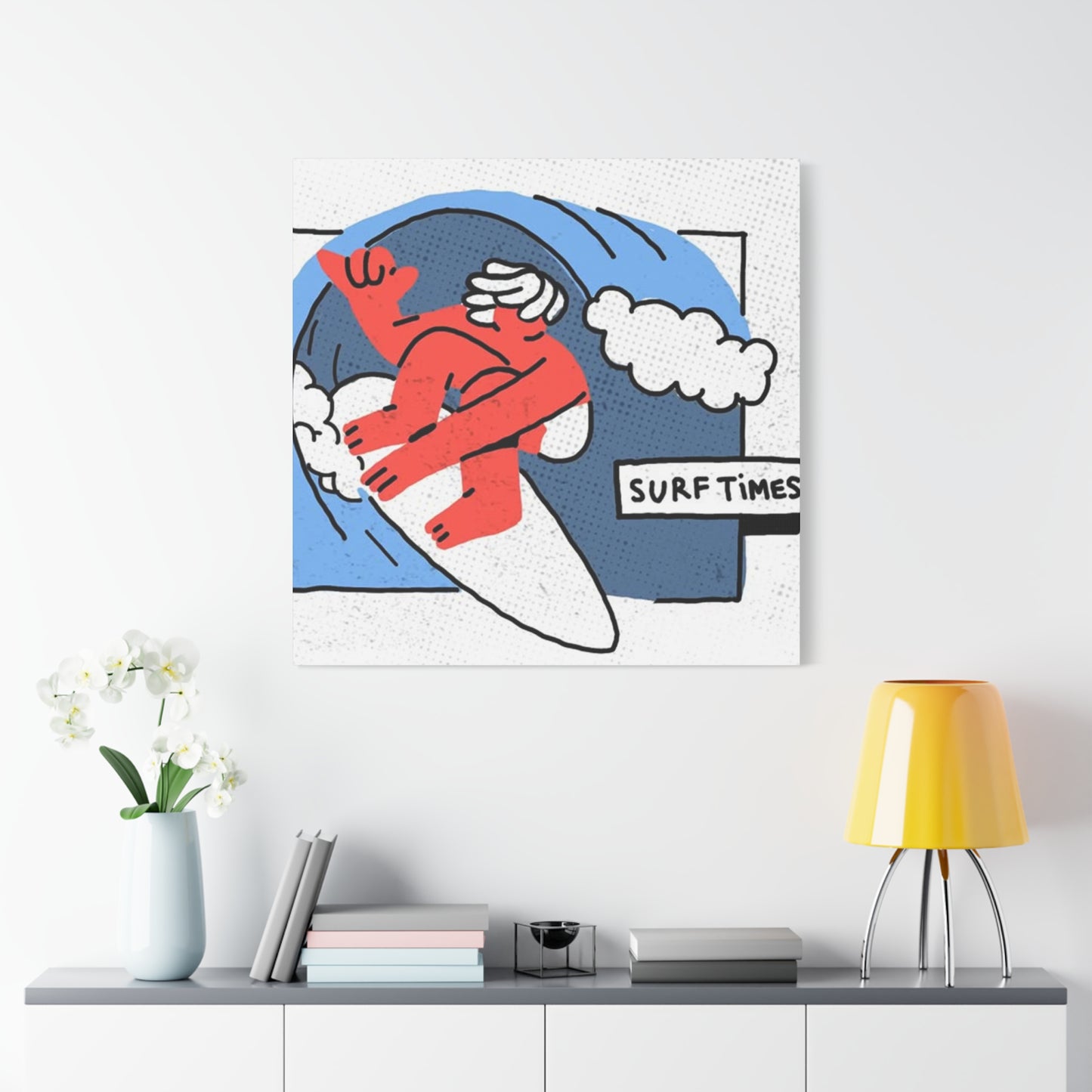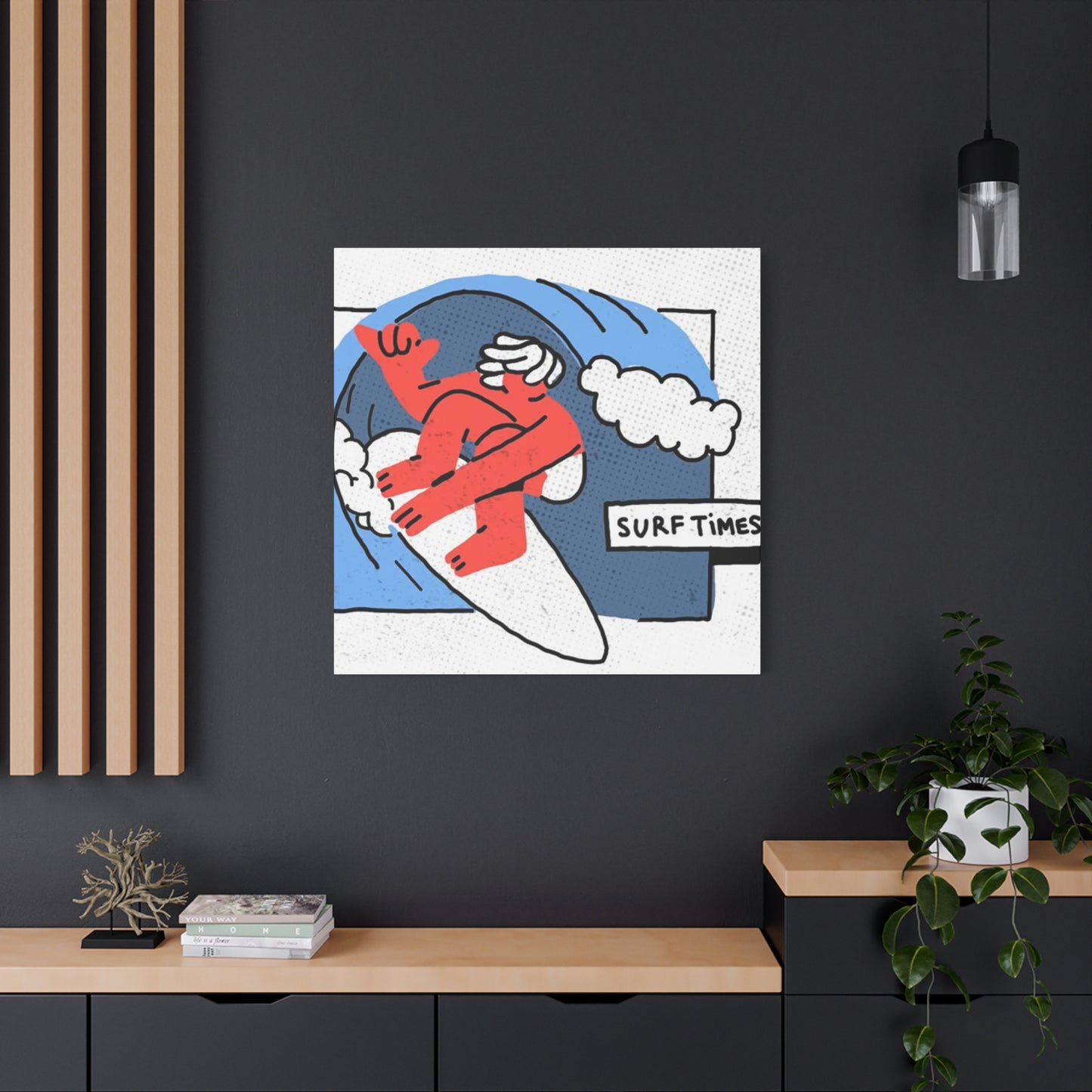Capturing Ocean Adventures: Your Complete Guide to Surf Time poster Wall Art
The ocean has always held a magnetic pull for those who seek adventure, freedom, and connection with nature. For surfers and ocean enthusiasts, the crashing waves, endless horizons, and golden sunsets represent more than just a hobby—they embody a lifestyle. Bringing these powerful moments into your home through carefully selected artwork creates a daily reminder of the beach's transformative energy. This comprehensive guide explores every aspect of selecting, displaying, and appreciating coastal artwork that celebrates the surfing lifestyle, from understanding different artistic approaches to creating cohesive decorating schemes that reflect your passion for the ocean.
Abstract Styles in Surf Time Wall Art
Abstract representations of surfing and ocean scenes offer a unique way to capture the essence of wave riding without relying on literal depictions. These artistic interpretations focus on the feeling, movement, and energy of the surfing experience rather than photographic accuracy. Artists working in this style often use bold brushstrokes, unexpected color combinations, and geometric shapes to convey the dynamic nature of waves and the exhilaration of riding them.
The beauty of abstract surf artwork lies in its ability to evoke emotion through color and form. Deep blues might blend into vibrant turquoises, punctuated by whites that suggest foam and spray. These pieces often feature sweeping lines that mirror the curve of a breaking wave or the arc of a surfboard carving through water. The lack of precise details allows viewers to project their own experiences and memories onto the artwork, making each piece deeply personal.
Many contemporary artists have embraced minimalist abstract approaches, using simple color blocks and clean lines to suggest the ocean's presence. These works can feature a horizon line dividing canvas between sky and sea, with subtle gradations of blue creating depth and atmosphere. Such pieces work exceptionally well in modern homes where simplicity and clean aesthetics are valued. The abstract nature means they complement various color schemes while maintaining their connection to surf culture.
Expressionist abstract surf artwork takes a more energetic approach, with chaotic brushwork and intense colors reflecting the power and unpredictability of the ocean. These pieces might feature swirling patterns that suggest turbulent water, or explosive bursts of color representing the moment a wave crashes. The emotional intensity of these works resonates with surfers who understand the adrenaline rush of challenging conditions.
Textured abstract pieces add another dimension to surf artwork, with artists building up layers of paint or mixed media to create physical depth. These three-dimensional surfaces catch light differently throughout the day, creating ever-changing visual interest. The texture might suggest the roughness of ocean spray, the smoothness of a glassy wave face, or the graininess of wet sand. Running your hand across these surfaces creates a tactile connection to the artwork.
Color field paintings represent another abstract approach, where large areas of color create an immersive experience. A canvas might feature nothing but gradually shifting shades of blue, evoking the meditative quality of staring at the ocean. These contemplative pieces bring a sense of calm and spaciousness to any room, reminding viewers of the tranquil moments between sets when surfers float peacefully on their boards.
Geometric abstractions incorporate angular shapes and crisp lines to deconstruct surfing scenes into their basic components. A surfboard might become a simple diagonal slash of color, while waves transform into repeating triangular patterns. This mathematical approach to representing the ocean appeals to those who appreciate both surf culture and contemporary design aesthetics.
The versatility of abstract surf artwork means it can adapt to changing decor trends while remaining timeless in its connection to the ocean. Unlike photographic or realistic pieces that might feel dated, abstract works maintain their relevance across decades. This makes them an excellent investment for collectors who want artwork that will grow with their evolving tastes.
Display Tips for Surf Time Canvas Prints
Proper display techniques can transform a simple canvas print into a captivating focal point that commands attention and enhances your living environment. The way you position, light, and frame your surf artwork significantly impacts its visual impact and how it integrates with your existing furnishings and architectural features.
Wall placement requires careful consideration of both viewing angles and natural light sources. Hanging artwork at eye level—typically with the center of the piece positioned 57 to 60 inches from the floor—ensures comfortable viewing for most people. However, in rooms where people are usually seated, such as dining areas or lounges, lowering the artwork slightly creates better visual flow. Consider the primary vantage points in each room and position your pieces accordingly.
Natural lighting can dramatically affect how colors appear in your surf prints. Morning light tends toward cooler tones, while afternoon and evening light brings warmth. Observe how sunlight moves through your rooms throughout the day before finalizing placement. While natural light beautifully illuminates artwork, direct sunlight can cause fading over time. Position valuable pieces away from windows where harsh rays might strike them, or use UV-protective glass and window treatments to filter damaging light.
Artificial lighting offers more control over how your artwork appears. Picture lights mounted above frames cast a warm, focused glow that highlights colors and textures. Track lighting provides flexibility, allowing you to adjust beam angles to minimize glare while maximizing visual impact. For a more subtle approach, indirect lighting that washes the wall behind the artwork creates a gentle halo effect that draws the eye without overwhelming the piece.
Creating gallery walls with multiple surf prints requires planning to achieve a cohesive yet dynamic arrangement. Start by laying out your pieces on the floor, experimenting with different configurations until you find a balanced composition. Maintain consistent spacing between frames—typically 2 to 3 inches—to create visual unity. Gallery walls can follow various patterns: symmetrical grids offer formal elegance, while organic salon-style arrangements feel more relaxed and collected over time.
Size relationships matter when displaying multiple pieces together. A large central canvas can anchor a collection of smaller prints arranged around it, creating a clear focal point. Alternatively, a series of same-sized prints hung in a row creates rhythm and movement, particularly effective with sequential images showing wave progression or different surf breaks. Varying sizes adds visual interest but requires careful balancing to avoid a cluttered appearance.
Mixing canvas prints with other artwork types and decorative objects creates depth and personality. Combine surf prints with photographs, sculptures, or found objects from the beach like driftwood or vintage surfboards. This layered approach tells a richer story about your connection to ocean culture and creates conversation-starting displays that reveal your personality.
Corner arrangements and unconventional placements can maximize impact in challenging areas. Wrapping artwork around corners creates unexpected visual interest, while positioning pieces in unexpected locations—above doorways, in hallways, or even on ceilings—surprises and delights viewers. These creative approaches work especially well with abstract or artistic surf pieces that encourage fresh perspectives.
Leaning large canvas prints against walls rather than hanging them creates a casual, collected vibe perfect for relaxed coastal aesthetics. This approach works beautifully on mantels, shelves, or the floor, allowing you to easily rotate pieces seasonally or when your mood changes. Layer multiple canvases of varying sizes for an effortlessly stylish look that suggests artistic sensibility without seeming overly curated.
Emotional Connection to Surfing Scenes
The profound emotional resonance that surfing imagery creates goes far beyond simple decoration—it taps into deep psychological connections between humans and the ocean. For those who have experienced the thrill of wave riding, surf artwork serves as a portal to treasured memories and the transformative feelings that come from time spent in the water.
Nostalgia plays a powerful role in our attraction to surfing scenes. A single image can transport viewers back to perfect summer days, memorable surf trips, or the moment they first successfully rode a wave. These artworks become visual touchstones that anchor us to experiences that shaped our identities and worldviews. Looking at a well-composed surf scene can trigger the same neural pathways activated during the original experience, essentially allowing us to relive those moments.
The sense of freedom that surfing represents resonates with people across all walks of life, even those who have never set foot on a board. Surfing imagery symbolizes escape from daily routines, responsibilities, and stress. It represents a lifestyle where natural rhythms dictate the schedule rather than alarm clocks and calendars. This fantasy of liberation makes surf artwork appealing to anyone who dreams of trading their desk for a beach and their commute for sunrise sessions.
Connection to nature forms another crucial element of surfing's emotional appeal. In our increasingly digital and urbanized world, images of pristine waves and endless oceans remind us of forces larger than ourselves. They reconnect us with the natural world and the humbling experience of matching our small human bodies against the ocean's immense power. This relationship with nature provides a counterbalance to modern life's artificial environments and constant connectivity.
The meditative quality of surfing scenes offers psychological benefits similar to mindfulness practices. Gazing at images of calm seas or rhythmic wave patterns can lower stress hormones, reduce blood pressure, and promote feelings of tranquility. The color blue itself has been shown to have calming effects on the human psyche, making ocean imagery a natural choice for creating peaceful environments. Many people report that looking at their surf artwork helps them decompress after difficult days.
For active surfers, artwork depicting their passion serves as motivation during flat spells or when life circumstances prevent them from getting in the water. These images keep the stoke alive, maintaining their connection to surf culture even when they cannot physically participate. They serve as reminders of why they dedicate so much time and energy to their craft, renewing their commitment to the surfing lifestyle.
Community and belonging are strengthened through displaying surfing scenes in your home. These pieces signal your membership in a global tribe of ocean lovers, creating instant connection points with visitors who share your passion. They spark conversations, story-sharing sessions, and the formation of new friendships based on common interests. In this way, surf artwork functions as more than decoration—it becomes a social catalyst.
Aspirational elements of surfing imagery inspire viewers to pursue their own ocean adventures. A print showing a perfect barrel or an exotic tropical break might motivate someone to plan their next surf trip, take up the sport, or push their skills to new levels. These pieces keep dreams alive and goals visible, providing daily reminders of what we hope to achieve or experience.
The romantic and aesthetic appeal of surfing scenes transcends practical considerations. The interplay of light on water, the graceful arc of a surfer's turn, the dramatic moment of a wave's peak—these visual elements possess inherent beauty that satisfies our need for art and aesthetics. Even for non-surfers, these compositions offer compelling subject matter that enhances any environment with natural elegance and dynamic energy.
Gift Ideas: Surf Time Wall Art
Selecting surf-themed artwork as a gift demonstrates thoughtfulness and understanding of the recipient's passions, making it an ideal choice for surfers, ocean lovers, and coastal living enthusiasts. The range of options available ensures you can find pieces appropriate for various relationships, budgets, and tastes while giving something that will be treasured for years.
For the dedicated surfer in your life, consider artwork depicting their favorite break or home beach. Many artists and photographers specialize in location-specific surf imagery, capturing the unique characteristics of renowned spots around the world. A print showing Pipeline, Bells Beach, or their local reef creates a deeply personal connection that shows you understand and appreciate what matters most to them. These pieces become cherished possessions that commemorate significant places in their surfing journey.
Vintage surf posters make excellent gifts for those who appreciate surf culture history and retro aesthetics. Reproductions of classic competition posters, advertisements for surf films, or artwork from surfing's golden age in the 1960s tap into nostalgia while offering striking visual appeal. These pieces work beautifully in home offices, garages converted to board storage areas, or casual living rooms where their bold graphics and period charm shine.
Custom artwork created from personal photographs elevates gift-giving to an extremely meaningful level. Many artists offer services where they transform photos you provide into paintings, illustrations, or stylized prints. Imagine giving a surfer an artistic rendering of themselves pulling into a barrel, or presenting parents with a beautiful piece showing their child learning to surf. These one-of-a-kind creations become family heirlooms that carry emotional weight far beyond standard artwork.
Series or triptych pieces work wonderfully as milestone gifts for weddings, anniversaries, or housewarmings. Three related canvases showing wave progression or different perspectives of the same break create sophisticated statements that fill larger wall expanses. The connected nature of these pieces symbolizes relationships, journeys, and the passage of time, making them metaphorically appropriate for celebrating life transitions.
For budget-conscious situations, high-quality prints in ready-made frames offer affordability without sacrificing visual impact. Many talented photographers and artists sell museum-quality reproductions at accessible price points. Paired with a thoughtfully chosen frame that matches the recipient's decor style, these pieces punch above their price tag. This approach works well for friends, colleagues, or casual acquaintances where you want to acknowledge their interests without overstepping relationship boundaries.
Motivational surf quotes combined with imagery create inspiring gifts for beginners or those facing challenges. Pieces featuring phrases like "The best surfer out there is the one having the most fun" or "You can't stop the waves, but you can learn to surf" pair encouragement with beautiful visuals. These work especially well for teenagers, young adults, or anyone embarking on new chapters who could benefit from the philosophical wisdom surfing offers.
Limited edition prints from renowned surf photographers or artists appeal to serious collectors and connoisseurs. Numbered and signed pieces come with certificates of authenticity and often appreciate in value over time, making them investment-quality gifts appropriate for major occasions. Research the recipient's taste in surf photography styles—whether they prefer action shots, lineup landscapes, or artistic interpretations—to ensure your selection aligns with their aesthetic preferences.
Surf lifestyle imagery rather than active surfing scenes suits those who love coastal living but may not actually surf. Pieces showing surfboards leaning against weathered fences, vintage woodies packed with boards, or serene beach scenes at golden hour celebrate surf culture broadly. These approachable images appeal to wider audiences while still honoring the recipient's connection to ocean living.
Popular Artists Creating Surf Time Posters
The world of surf-focused artwork has attracted talented creators who have dedicated their careers to capturing the beauty, power, and culture of wave riding. Understanding the artists behind surf posters helps collectors make informed choices and appreciate the unique perspectives each brings to this specialized genre.
Clark Little has revolutionized surf photography through his shorebreak images captured from inside breaking waves. His unique perspective, often shooting while being tumbled in the impact zone, produces stunning images of water, light, and sand in motion. Little's work transforms chaotic, powerful moments into crystalline art pieces that reveal the wave's inner architecture. His prints are highly sought after by collectors who appreciate both technical excellence and visceral impact.
Drew Brophy pioneered the surf art genre with his distinctive cosmic and psychedelic style applied to surfboards and canvas. His work features vibrant colors, flowing lines, and spiritual themes that capture surfing's transcendent qualities. Brophy's art appeals to those who view surfing as more than sport—as a pathway to higher consciousness and connection with universal energy. His pieces bring infectious energy and positive vibes to any environment.
Heather Brown brings a distinctly Hawaiian perspective to surf artwork through her bold, graphic style featuring tropical flowers, island landscapes, and iconic surf breaks. Her work celebrates the aloha spirit and island lifestyle with saturated colors and simplified forms that create immediate visual impact. Brown's pieces transport viewers to paradise, making them perfect for those dreaming of tropical surf destinations or seeking to recreate island vibes in their homes.
John Severson, founder of Surfer Magazine, created artwork that defined surf culture's visual language during its formative years. His paintings and illustrations from the 1960s capture the sport's soul with loose, expressive brushwork and an artist's eye for composition. Original Severson pieces command premium prices, but quality reproductions make his influential work accessible to broader audiences. His art represents an important chapter in surfing history that resonates with purists and historians.
Phil Roberts brings fine art sensibilities to surf subjects through his impressionistic oil paintings. His work captures the play of light on water with sophisticated color palettes and painterly technique that elevates surf imagery into gallery-worthy art. Roberts' pieces appeal to serious art collectors who want surf subject matter treated with the same respect and skill as traditional landscape painting.
Megan Connelly has emerged as a leading voice in contemporary surf art through her vibrant, joyful paintings celebrating female surfers and ocean life. Her work features bold colors, playful compositions, and an inclusive vision of surf culture that resonates with modern audiences. Connelly's art challenges traditional male-dominated surf imagery while maintaining universal appeal through sheer exuberance and technical skill.
LeRoy Grannis documented California surf culture during its golden age, creating an irreplaceable archive of historical imagery. His photographs from the 1960s and 70s capture iconic surfers, legendary breaks, and the era's carefree lifestyle with documentary authenticity and artistic composition. Grannis prints offer windows into surfing's past that fascinate both those who lived through that era and younger generations discovering surf history.
Thomas Campbell approaches surf art through an experimental, multidisciplinary lens incorporating painting, film, and music. His abstract and sometimes whimsical work defies easy categorization, appealing to those who appreciate unconventional artistic visions. Campbell's pieces bring intellectual depth and artistic credibility to surf subject matter, demonstrating that surf art can challenge viewers while celebrating wave riding culture.
Techniques for Painting Surf and Waves
Creating convincing surf and wave paintings requires understanding both technical artistic skills and intimate knowledge of how water moves, catches light, and forms recognizable patterns. Artists working in this genre employ various techniques to translate three-dimensional, constantly moving subjects onto two-dimensional surfaces while maintaining energy and authenticity.
Understanding water's transparency and reflectivity forms the foundation of realistic wave painting. Water simultaneously shows what lies beneath its surface, reflects what exists above it, and possesses its own color based on depth, light conditions, and suspended particles. Artists must layer these elements convincingly, often starting with darker underwater tones, adding reflected sky colors, and finishing with surface details like foam and spray. This layering approach creates the complex optical effects that make painted water feel wet and alive.
Capturing movement in a static medium challenges artists to imply motion through careful brushwork and compositional choices. Directional brushstrokes following water's flow patterns create kinetic energy, while blur effects suggest rapid movement. The positioning of spray, foam trails, and the surfer's body language all contribute to the sense that the viewer has frozen a moment in time rather than seeing something static. Dynamic diagonal compositions feel more energetic than horizontal or vertical arrangements.
Color mixing for ocean scenes requires sophisticated understanding of how light behaves underwater and in various weather conditions. Tropical waves might feature brilliant turquoises and greens as sunlight penetrates clear water, while stormy North Atlantic swells present steely grays and deep navy tones. Artists often work with limited palettes—primarily blues, greens, and whites—creating variety through temperature shifts (warm versus cool blues) and value changes (light to dark) rather than introducing unrelated colors.
Foam and spray present unique challenges because they lack defined edges and solid form. Successful artists suggest these elements through strategic placement of pure white highlights and soft, diffused edges that fade into surrounding water or sky. Dry brush techniques, where a barely loaded brush skips across the canvas texture, effectively creates the airy, insubstantial quality of spray. Splatter and spatter techniques can add spontaneous energy for more impressionistic approaches.
Depicting the wave face—the smooth, glassy surface before it breaks—requires subtle gradations showing the curve from thick base to thin lip. Artists often use glazing techniques, applying thin transparent layers to build depth and luminosity that mimics water's translucent quality. The gradient from dark at the base (where water is thickest) to bright at the top (where light shines through) creates the dimensional quality that makes painted waves feel tangible and massive.
Rendering the barrel or tube from inside presents the ultimate challenge in surf art. The curving wall of water surrounding the viewer must maintain proper perspective and curvature while showing both the wave's interior surface and the light coming through from behind. Artists often use strong light-dark contrasts to emphasize the tunnel's drama, with the exit point glowing brilliantly compared to darker surrounding water.
Background elements including sky, beach, and distant horizon anchor wave paintings in believable environments. These contextual details don't require the same attention to detail as the primary wave but must maintain atmospheric perspective, where distant elements appear lighter, cooler, and less detailed than foreground subjects. This depth cuing helps viewers understand the scene's spatial relationships.
Mixed media approaches combine traditional painting with collage, photography, and found materials to create textured, layered works. Artists might incorporate actual sand, resin, or metallic elements to enhance specific areas. These dimensional additions catch light physically, creating effects impossible with paint alone. Such experimental techniques push surf art boundaries while offering unique visual and tactile experiences.
Combining Surf Art with Beach Décor
Successfully integrating surf artwork with broader coastal decorating themes creates cohesive environments that celebrate ocean living through every design element. The key lies in balancing various components so they enhance rather than compete with each other, building atmospheres that feel intentional rather than haphazard.
Color coordination between artwork and surrounding elements establishes visual harmony that ties rooms together. If your primary surf piece features brilliant turquoise water, echo that shade in throw pillows, area rugs, or accent furniture. This repetition creates rhythmic connections that lead the eye around the room while reinforcing the coastal theme. However, avoid exact matching, which can feel contrived—instead, aim for complementary shades and tones that suggest a family of colors.
Texture layering adds depth and interest to coastal rooms, preventing them from feeling flat or one-dimensional. Pair smooth canvas surf prints with rough, natural materials like jute rugs, driftwood accessories, weathered wood furniture, and linen upholstery. These contrasting textures suggest the varied surfaces found at the beach—smooth water, rough sand, soft fabric similar to sun-faded beach towels, and aged wood like pier pilings or driftwood.
Natural materials reinforce connections between your artwork and authentic coastal environments. Rattan furniture, seagrass baskets, stone accents, and wooden elements all belong to the same material family as beach environments. These organic choices prevent rooms from feeling too sterile or decorative, grounding your surf art in tactile reality. Live plants, particularly tropical varieties or succulents, add life and soften hard edges while contributing additional coastal authenticity.
Vintage and antique coastal objects create layered narratives that complement rather than compete with surf artwork. Old fishing net, vintage life preservers, antique nautical instruments, or retro surf memorabilia add character and suggest collected-over-time authenticity. These pieces work especially well with vintage-style surf posters, creating cohesive vignettes that tell stories about maritime heritage and surf culture history.
Lighting choices dramatically affect how both artwork and overall ambiance feel. Natural fiber pendant lights, rope-wrapped fixtures, or driftwood lamps reinforce coastal themes while providing necessary illumination. The quality of light matters too—warm white bulbs create inviting, golden glows similar to sunset light, while cooler temperatures might suit modern interpretations. Ensure your surf artwork receives adequate lighting to show its colors and details properly.
Furniture arrangement should enhance rather than obstruct views of your surf artwork. Position seating to face major pieces, creating natural focal points that organize room layouts. Leave adequate blank wall around your artwork so it has breathing room and doesn't feel crowded by competing elements. In smaller rooms, resist the temptation to fill every surface—negative is valuable in preventing visual chaos.
Window treatments that filter rather than block natural light maintain connections to outdoor environments while protecting artwork from sun damage. Sheer white curtains, bamboo blinds, or plantation shutters all suit coastal aesthetics while offering light control. The goal is achieving brightness and airiness that mirrors beach environments rather than creating dim, enclosed feelings that contradict the openness your surf artwork represents.
Accessorizing with intention prevents rooms from crossing into theme park territory. Edit ruthlessly, displaying only items that carry personal meaning or exceptional beauty. A single perfect conch shell on a mantel makes stronger statement than dozens of random beach-picked shells scattered everywhere. This curated approach allows your surf artwork to remain the star while supporting elements enhance without overwhelming.
Surf Time Art in Modern and Vintage Styles
The versatility of surfing as an artistic subject allows it to be interpreted through numerous stylistic lenses, from sleek contemporary minimalism to nostalgic retro aesthetics. Understanding how different style approaches affect the mood and message of surf artwork helps collectors select pieces that align with their personal tastes and existing decor.
Modern minimalist surf artwork strips scenes to their essential elements, using clean lines, simplified forms, and limited color palettes to create sophisticated statements. A single surfer silhouette against a solid background, a geometric abstraction of a breaking wave, or a photograph with extreme negative space all exemplify this approach. These pieces suit contemporary homes where simplicity, clean aesthetics, and uncluttered environments reign. The restraint inherent in minimalism allows the power of the subject to speak without distraction.
Mid-century modern interpretations of surf themes capture the optimism and bold graphics of 1950s and 60s design. These pieces often feature saturated colors, atomic-age inspired shapes, stylized figures, and playful compositions that evoke the era when surfing exploded into mainstream consciousness. The style's characteristic warmth comes from wood tones, organic curves, and an embrace of nature that aligns perfectly with surf culture values. These works bring nostalgic charm without feeling dated, maintaining fresh appeal through timeless design principles.
Vintage surf posters from actual competitions, surf films, and events represent authentic historical artifacts with tremendous appeal for collectors and historians. Original pieces from the 1960s through 80s command premium prices, but high-quality reproductions make these designs accessible to broader audiences. The hand-drawn lettering, bold graphics, and period-specific design elements transport viewers to surfing's golden age, offering windows into how the sport was promoted and celebrated in earlier decades.
Contemporary photorealism in surf artwork showcases technical mastery and dramatic subjects through hyper-detailed renditions that rival or exceed photographic clarity. Artists working in this vein spend hundreds of hours perfecting every water droplet, foam bubble, and light reflection to create almost surreal levels of detail. These pieces appeal to viewers who appreciate both technical virtuosity and dramatic impact, functioning as statement pieces that dominate whatever room they inhabit.
Industrial and urban surf art represents a newer movement that juxtaposes surf culture against city environments or incorporates elements like graffiti, street art aesthetics, and urban decay. These pieces acknowledge that many surfers live in cities and travel to waves rather than inhabiting constant beach lifestyles. The contrast between gritty urban elements and pure ocean imagery creates dynamic tension that resonates with contemporary surf culture's reality.
Boho and eclectic approaches combine surf imagery with diverse influences including global textiles, folk art traditions, and spiritual symbolism. These pieces might feature mandala patterns overlaid on wave forms, surf scenes framed by intricate borders resembling Persian rugs, or compositions incorporating elements from multiple cultures. The resulting works celebrate surfing's universal appeal and the wanderlust that sends surfers exploring coastlines worldwide.
Scandinavian-influenced surf artwork applies Nordic design principles—functionality, simplicity, natural materials, and muted palettes—to ocean subjects. These pieces often feature subtle colors, clean compositions, and emphasis on light and form over decorative details. The resulting works bring quiet sophistication and understated elegance to coastal themes, perfect for those who love both surfing and Nordic aesthetic sensibilities.
Rustic and farmhouse coastal interpretations combine weathered finishes, distressed frames, and vintage-inspired imagery to create comfortable, lived-in feelings. These pieces often feature muted colors, aged appearances, and compositions that emphasize storytelling over polish. The style suits those who want their surf artwork to feel like treasured items passed down through generations rather than shiny new purchases.
Using Surf Time Prints in Casual Spaces
Casual living areas including family rooms, game rooms, home offices, and bedrooms benefit enormously from surf-themed artwork that reflects relaxed coastal lifestyles while enhancing daily living environments. These less formal spaces allow greater creative freedom in how artwork is displayed and integrated with functional elements.
Family rooms and living areas where people gather for entertainment and relaxation provide ideal settings for larger, more casual surf pieces that spark conversation and create atmosphere. A big canvas showing a perfect wave above the sofa establishes the room's vibe while providing a focal point that organizes furniture arrangements. The casual nature of these means you can take risks with bolder colors or more dramatic imagery than you might in formal areas, knowing the room's function supports energetic, dynamic artwork.
Home offices benefit from surf imagery that inspires and motivates during work hours. A well-chosen piece reminds you why you work hard—to afford surf trips, coastal living, or simply to maintain balance between professional obligations and personal passions. Positioning your surf artwork where you can easily view it during breaks provides mental respite and helps maintain perspective during stressful moments. Choose pieces that energize rather than distract, with compositions that don't pull focus from tasks.
Bedroom surf artwork should promote relaxation and positive associations with sleep environments. Calm wave scenes, serene lineups at dawn or dusk, or abstract pieces in soothing blues create tranquil atmospheres conducive to rest. Avoid overly energetic or dramatic pieces that might stimulate rather than soothe. The goal is surrounding yourself with imagery that makes you feel peaceful and content, perhaps inspiring pleasant dreams of perfect waves.
Children's bedrooms and playrooms offer opportunities for more playful surf art approaches. Cartoon-style illustrations, bright colors, and fun compositions featuring young surfers, surf animals, or whimsical wave interpretations all work well. These pieces can grow with children, evolving from playroom decorations to bedroom focal points as kids mature. Consider involving children in selecting their surf artwork to build ownership and enthusiasm for both art and ocean conservation.
Mudrooms, entryways, and hallways connecting living areas benefit from smaller surf prints that create gallery-like progression through homes. These transitional areas often lack natural focal points, making them perfect for art displays that might get lost in larger rooms. A series of surf photographs documenting a single session or various breaks creates visual interest that makes these utilitarian passageways feel intentional and finished.
Garages converted into board storage or surf gear organizational often embrace raw, industrial aesthetics where vintage posters, action photos, and authentic surf memorabilia feel at home. These spaces celebrate functional surf culture rather than polished decorating, allowing for relaxed display approaches including unframed prints, poster boards, and mixed collections of surf-related imagery and objects. The casual nature of garage spaces permits experimental arrangements you might not attempt elsewhere.
Outdoor living areas including patios, lanais, and pool houses extend living beyond interior walls, creating perfect settings for weather-resistant surf artwork. Many companies now produce outdoor-rated prints that withstand sun, moisture, and temperature fluctuations while maintaining color and integrity. These pieces strengthen connections between indoor and outdoor environments while reinforcing coastal lifestyle themes. Ensure any artwork in outdoor areas is specifically rated for exterior use to prevent disappointment from weather damage.
Bathroom surf themes might seem clichéd but work beautifully when executed with restraint and quality artwork. A single striking surf photograph or artistic wave rendering adds personality to bathrooms without overwhelming limited wall area. The presence of water in both subject matter and room function creates natural harmony. Ensure frames and materials can handle moisture-rich environments to prevent warping or mold issues.
The Energy of Waves in Surf Time Art
Capturing and conveying the raw power and dynamic energy of ocean waves represents one of surfing artwork's greatest challenges and most compelling achievements. Artists who successfully translate this kinetic force into static images create pieces that pulse with life and movement, allowing viewers to feel the ocean's strength even from dry land.
Visual motion in wave paintings comes from understanding how water actually moves and translating those patterns into artistic marks. Waves don't simply rise and fall—they roll, fold, crash, surge, and dissipate through complex hydrodynamics. Artists who observe these movements closely can suggest them through directional brushstrokes, curved lines following water's flow, and strategic placement of foam and spray that indicates direction and speed. The result is artwork that feels alive rather than frozen.
Scale representation communicates wave size and power through both absolute and relative measures. Comparing wave height to human surfers provides immediate context—a tiny figure dwarfed by a massive wall of water instantly conveys danger and awe. But artists can also suggest scale through detail gradation, where larger waves show more complexity and variation across their faces, or through background elements like cliffs or boats that provide reference points. Enormous waves demand canvas sizes and compositions that allow their magnitude to register properly.
Moment selection determines whether artwork captures building, breaking, or dissipating energy. The instant before a wave breaks, when water stands vertical in defiance of gravity, contains maximum potential energy and dramatic tension. The explosion of breaking moments features chaotic power and visual complexity. The aftermath, as foam and turbulence spread, shows energy's dispersion and transformation. Each moment offers different artistic possibilities and emotional impacts that artists consciously choose based on intended effects.
Color intensity reflects wave energy levels, with more powerful waves often warranting bolder, more saturated color treatments. Deep, rich blues suggest depth and mass, while bright whites convey explosive force and impact. Artists might push beyond realistic colors during most powerful moments, using unexpected hues that emphasize emotional rather than literal truth. The contrast between dark water and white foam increases with wave size and power, creating dramatic compositions that command attention.
Compositional weight through asymmetric arrangements keeps energetic surf artwork from feeling static or balanced. Waves positioned off-center, surfers placed according to rule-of-thirds principles, and diagonal orientations all contribute to dynamic compositions that suggest movement and tension. Symmetrical, centered compositions feel more stable and calm—appropriate for serene wave scenes but wrong for capturing powerful surf's intensity.
Textural elements including heavy impasto, rough brushwork, and physical surface variation can suggest wave energy through tactile means. Thick paint creating actual ridges and valleys makes viewers want to reach out and touch the surface, creating multisensory engagement beyond pure vision. These dimensional variations also catch light physically, creating shadows and highlights that change as viewing angles shift, mimicking water's ever-changing surface.
Negative tension through compositional choices that leave viewers feeling slightly off-balance mirrors the physical sensation of facing powerful waves. Cropping waves so they extend beyond frame edges suggests forces too large to contain, while unusual angles create mild visual disorientation similar to being in impact zones. These subtle psychological effects make viewers feel wave power rather than simply observe it.
Implied sound through visual suggestions of crashing, roaring water activates viewers' memories of actual wave sounds. Explosive spray patterns, collapsing lips, and turbulent foam all suggest the thunderous rumble of serious surf. Though obviously silent, effective wave artwork almost allows viewers to hear what they're seeing, creating synaesthetic experiences that engage multiple senses through visual stimulation alone.
Surf Culture Captured on Canvas
Beyond depicting waves and surfers, some artwork focuses on the broader cultural elements surrounding surfing—the lifestyle, community, philosophy, and aesthetic that define surf culture beyond the act of wave riding itself. These pieces celebrate surfing as a complete way of life rather than simply a sport or hobby.
Board culture artwork highlights the surfboard itself as both functional tool and cultural icon. Vintage longboards lined against weathered fences, colorful quivers photographed as abstract color studies, or detailed close-ups showing foam and fiberglass construction all celebrate surfboard's central role in surf culture. These pieces appeal to board collectors and craftsmen who appreciate surfboards as functional art objects with rich design histories.
Vehicle culture including vintage woodies, VW buses, and surf-loaded trucks represents the mobile nature of surf lifestyle and the quest for perfect waves. These iconic vehicles symbolize freedom, adventure, and the willingness to go wherever waves call. Artwork featuring these vehicles often includes nostalgic, romantic lighting and compositions that emphasize surf culture's adventurous spirit and nomadic tendencies.
Conclusion
Surf Time poster wall art is a dynamic and inspiring way to bring the thrill and beauty of ocean adventures into your home. For surf enthusiasts and lovers of coastal life, this style of wall art captures not just the visual excitement of riding waves but also the deeper spirit of freedom, connection to nature, and a laid-back lifestyle. Incorporating Surf Time posters into your décor offers a refreshing and vibrant way to celebrate the ocean’s energy while enhancing your living space with a sense of adventure and calm.
The appeal of Surf Time poster wall art lies in its ability to encapsulate the essence of surfing culture—freedom, spontaneity, and harmony with the sea. Whether featuring iconic surf breaks, stunning sunsets over the water, or silhouettes of surfers mid-action, these posters evoke powerful feelings of joy, exhilaration, and peace. They serve as reminders of memorable beach trips, the exhilaration of catching the perfect wave, or the serene moments spent watching the tide roll in. Displaying Surf Time art brings these emotions into your everyday environment, creating a space that inspires relaxation and adventure alike.
From an aesthetic perspective, Surf Time posters are incredibly versatile and vibrant. They often utilize bold, bright colors that mimic the vivid blues of the ocean, golden hues of the sun, and the natural tones of sandy beaches. This palette not only enlivens any room but also complements various décor styles—from coastal and nautical themes to modern and eclectic interiors. Whether printed on canvas, framed as vintage-style posters, or rendered in contemporary graphic designs, Surf Time wall art makes a striking statement piece that draws attention and sparks conversation.
Moreover, Surf Time poster wall art can serve as a personal connection to the ocean even if you’re far from the coast. In urban or indoor settings where the sea may feel distant, these artworks bring a touch of the ocean’s vastness and tranquility into your home. They can create a calming atmosphere that reduces stress and evokes the restorative powers of nature. For many, surf-themed art is more than decoration—it is a source of inspiration, motivation, and a reminder to live in harmony with nature’s rhythms.
Additionally, Surf Time posters make wonderful gifts for surfers, beach lovers, or anyone with an affinity for the ocean lifestyle. They are perfect for housewarmings, birthdays, or special occasions, symbolizing freedom, adventure, and the joy of living in the moment. Gifting this art connects the recipient to a broader community of ocean enthusiasts and serves as a lasting tribute to the beauty and spirit of surfing.
In conclusion, Surf Time poster wall art offers a unique blend of vibrant aesthetics, emotional resonance, and lifestyle inspiration that can brighten any space. Whether you are a seasoned surfer or simply appreciate the ocean’s allure, this wall art style invites you to celebrate your passion for the sea and the adventures it holds. By incorporating Surf Time posters into your décor, you transform your home into a sanctuary of energy, freedom, and natural beauty. Embrace the spirit of ocean adventures and let your walls tell a story of waves, sun, and endless horizons.

















